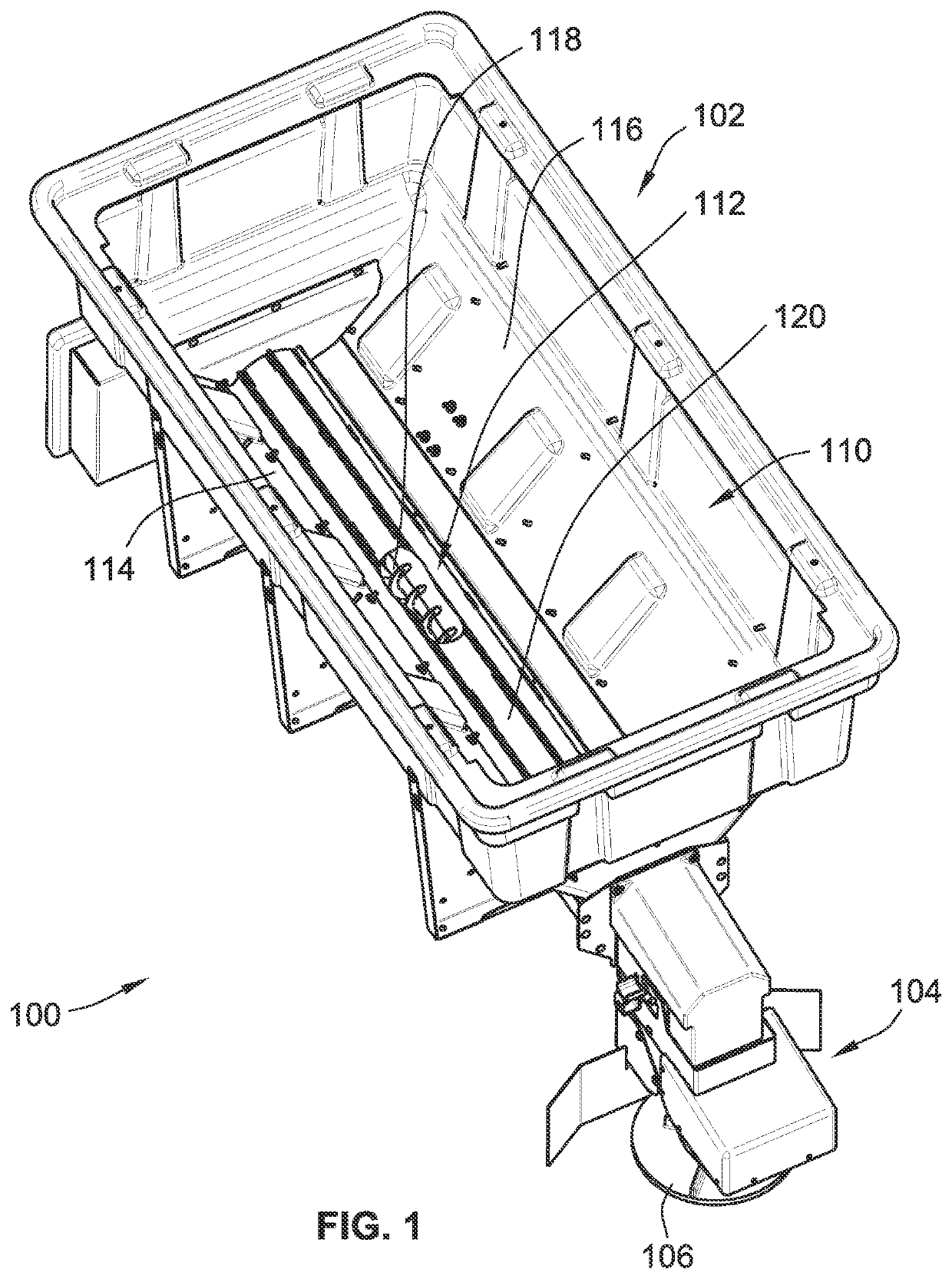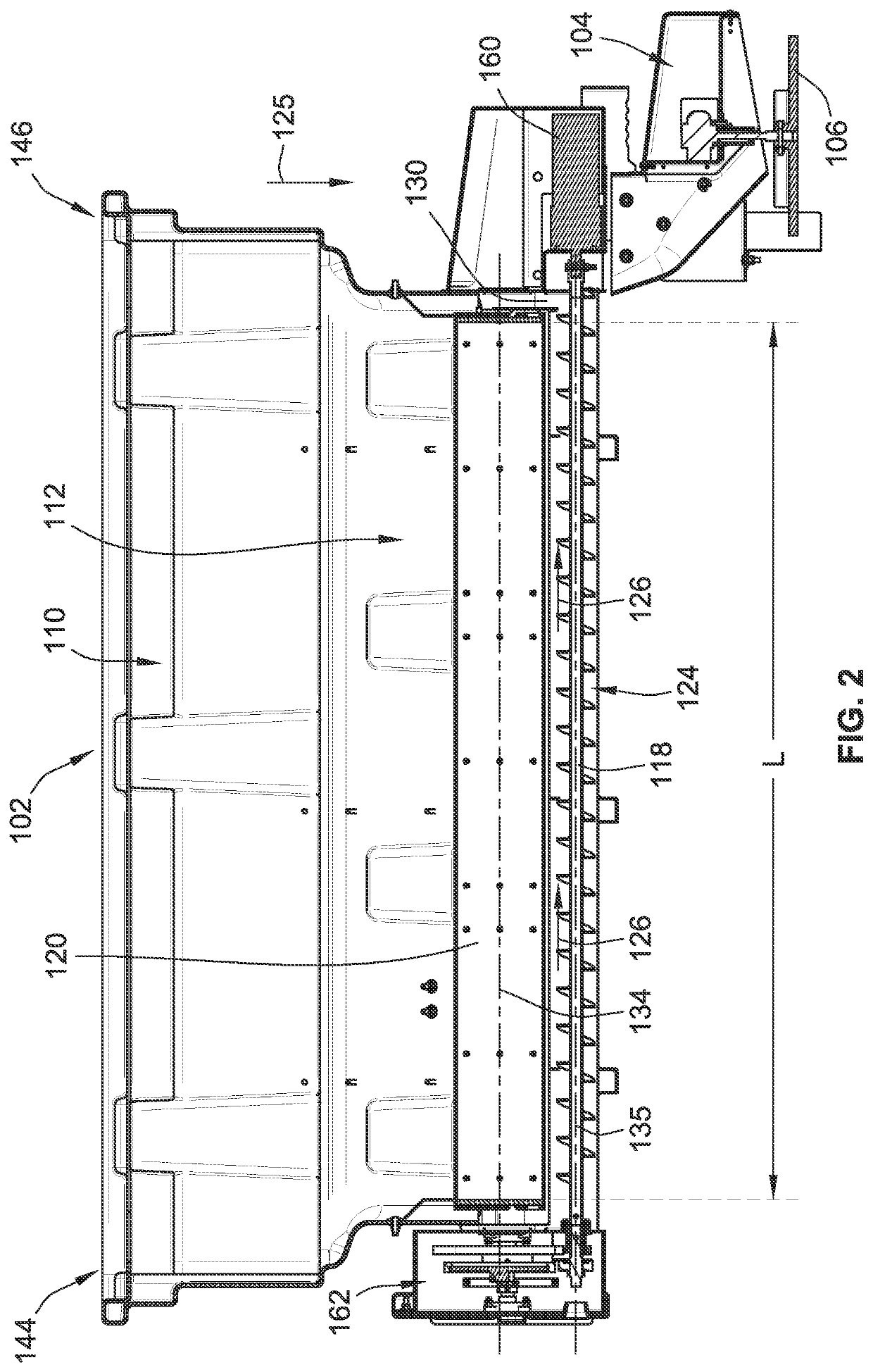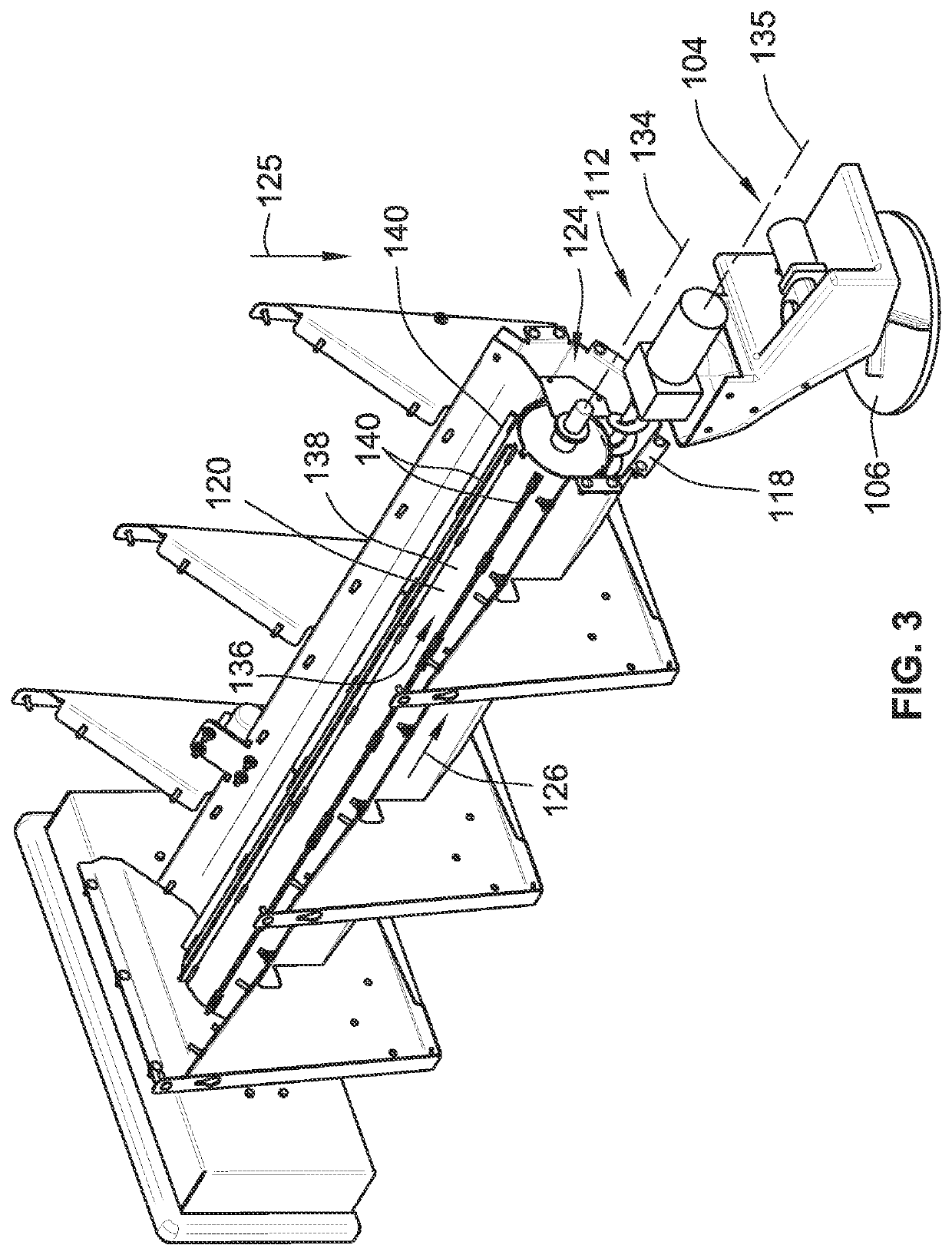Spreader for spreading granular material and method of spreading granular material
a technology of granular material and spreader, which is applied in the direction of loading/unloading, packaging, construction, etc., can solve the problems of long down time for repairs, very different repose angles of materials used to combat ice and/or snow, and high initial cost and upkeep costs
- Summary
- Abstract
- Description
- Claims
- Application Information
AI Technical Summary
Benefits of technology
Problems solved by technology
Method used
Image
Examples
Embodiment Construction
[0072]FIG. 1 illustrates a hopper spreader apparatus 100 in accordance with an embodiment of the present invention. The hopper spreader apparatus is designed to distribute granular material including easily flowing material and flow resistant material such as, for example, sand (including dry and wetted sand), salt, salt with a liquid additive, or a mixture of sand and salt. While the hopper spreader apparatus 100 finds particular use in spreading sand and / or salt for cold weather applications, the hopper spreader apparatus 100 can be used for distributing other materials in other situations, such as for example, fertilizer.
[0073]The hopper spreader apparatus 100 generally includes a hopper 102 for storing the material to be distributed and a spreading unit 104 for spreading the material. In the illustrated embodiment, the spreading unit 104 is in the form of a spinner assembly that includes a rotating spinner 106 that spreads the material by centrifugally propelling the material th...
PUM
 Login to View More
Login to View More Abstract
Description
Claims
Application Information
 Login to View More
Login to View More - R&D
- Intellectual Property
- Life Sciences
- Materials
- Tech Scout
- Unparalleled Data Quality
- Higher Quality Content
- 60% Fewer Hallucinations
Browse by: Latest US Patents, China's latest patents, Technical Efficacy Thesaurus, Application Domain, Technology Topic, Popular Technical Reports.
© 2025 PatSnap. All rights reserved.Legal|Privacy policy|Modern Slavery Act Transparency Statement|Sitemap|About US| Contact US: help@patsnap.com



